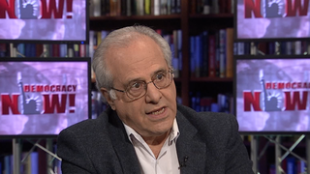 The labor movement and criticism are certainly two things that are not usually found together. On the level of day-today functioning the internal culture of many leading US mainstream unions perhaps share a fair amount in common with the military or a centralized political party– where participants are expected to “toe the line” on key issues, and most forms of criticism are frowned upon, if not looked at as close to treason– instead of an open culture of debate and critical discussion. On the broader level, around issues such as strategy, organizing models and structure, any debate to be had is largely conducted in closed door meetings by top officials. In fact, authors Bill Fletcher Jr. and Fernando Gapasin in their recent book Solidarity Divided, The Crisis in Organized Labor and a New Path Toward Social Justice speak of a ”toxic culture within the overall union movement that denies the importance of debate.” (124)
The labor movement and criticism are certainly two things that are not usually found together. On the level of day-today functioning the internal culture of many leading US mainstream unions perhaps share a fair amount in common with the military or a centralized political party– where participants are expected to “toe the line” on key issues, and most forms of criticism are frowned upon, if not looked at as close to treason– instead of an open culture of debate and critical discussion. On the broader level, around issues such as strategy, organizing models and structure, any debate to be had is largely conducted in closed door meetings by top officials. In fact, authors Bill Fletcher Jr. and Fernando Gapasin in their recent book Solidarity Divided, The Crisis in Organized Labor and a New Path Toward Social Justice speak of a ”toxic culture within the overall union movement that denies the importance of debate.” (124)
The recent conflict between the UNITE and HERE sides of the formerly merged HERE-UNITE, with SEIU teaming up on the side of UNITE, is a perfect example. Each party has cooked up more or less smokescreen issues to justify their power plays for control over members and organizing resources. In their attacks on each other members and staff have been bombarded with letters, flyers, mailings and even pre-recorded phone calls and some with ominous messages which take a page from the play book of union busting efforts. While I believe more more is yet to be revealed, we can gain insight into how some of this has playd out by looking at the PR battle of anonymous websites each side has used, such as HERE’s “One UNITE-HERE” and UNITE/SEIU’s project “Workers United,” which is threatening to raid HERE’s hotel and hospitality membership (who on their website reveal their affiliation with SEIU, but previously did not).
As each side rallies its troops, demanding the loyalty of staff and members, it becomes harder to separate fact from fiction, though in the bigger picture a more true portrait of each player emerges. But amidst the intrigue, how can we develop a critical understanding of the problems the labor movement faces? And how can the labor movement develop a culture of criticism?
I believe these two pieces are helpful starting points and examples. The following articles were published in Monthly Review’s webzine, which is a project of the same foundation that publishes the influential independent left/socialist magazine. Also see their listing of labor related articles here. The first piece, “When the Union is the Boss” by Kevin Funk and published in early 2006, is the story of a young left/radical-leaning college graduate who goes to work for SEIU as a staff organizer– which is the likely demographic of SEIU organizers. Here he tells his story of a backfired electoral campaign, which is not entirely untypical in my view of their approach to organizing, along with the fierce opposition he encounters to any suggestion that SEIU staff might form their own union.
In “A Union is Not a ‘Movement’” by Monthly Review Editor Michael D. Yates, is a 1977 reprint from their magazine of a very early criticism of the UFW under Cesar Chavez. While I’m not quite sure if I would agree with the authors characterizations of the UFW and its needs, it does take up the question of the autocratic leadership of Chavez. Also a useful read, perhaps more so than Yates piece from the late 1970s, are a links to more recent articles in a similar vein, including a 2006 seven part investigative series by an LA Times reporter that deals with Chavez’s legacy and the subsequent decline of the union.
Like this:
Like Loading...
Filed under: Labor | Tagged: HERE, HERE-UNITE, labor unions, Michael D. Yates, Monthly Review, SEIU, Solidarity Divided, split in labor, UFW, unions, UNITE, Workers United | 2 Comments »






 Note: Bringing this back with a revised version. This commentary piece was removed after the attacks by right-wing blog and media sites on Van Jones intensified and led up to Obama washing his hands of Jones with his resignation. Right-wing sites cited “left wing blogger Machete408” as further ‘proof’ of Obama’s undercover socialist credentials (read an actual socialist refute this total non-sense
Note: Bringing this back with a revised version. This commentary piece was removed after the attacks by right-wing blog and media sites on Van Jones intensified and led up to Obama washing his hands of Jones with his resignation. Right-wing sites cited “left wing blogger Machete408” as further ‘proof’ of Obama’s undercover socialist credentials (read an actual socialist refute this total non-sense 



 The corporations got sloppy. From the hedge-fund parasites to the housing market fraudsters, the corporate criminals have shown their hand. Their filthy fingerprints are all over the economic pain blanketing the country and the world.
The corporations got sloppy. From the hedge-fund parasites to the housing market fraudsters, the corporate criminals have shown their hand. Their filthy fingerprints are all over the economic pain blanketing the country and the world.


